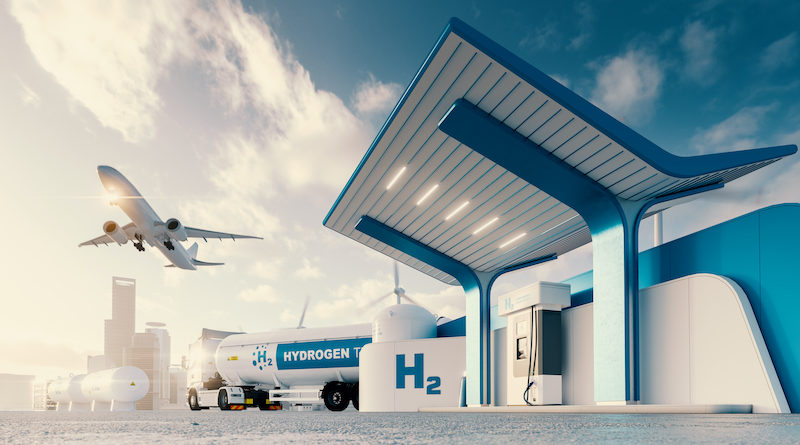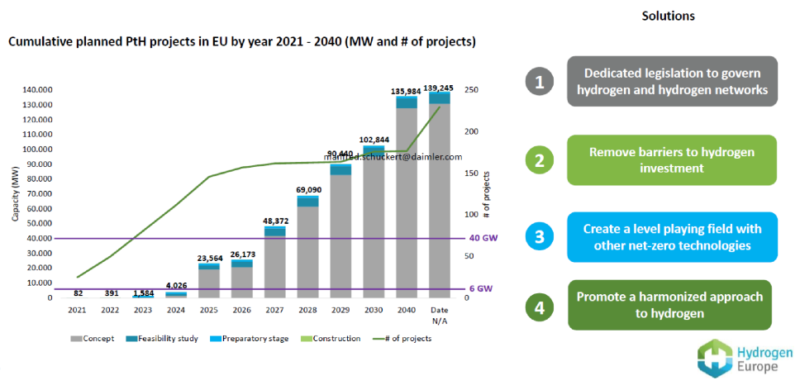
Building climate-neutral economy with hydrogen must start today
The summer of 2021 will be remembered by extreme weather conditions across the world: devastating floods in Belgium and Germany, massive wildfires in Greece, Turkey and Italy, heatwaves on the US Western Coast, and damaging hurricanes on the US East Coast. And while regular citizens are trying to overcome the consequences of these severe events, policymakers feel more pressed than ever to find solutions to tackling the global warming in the most efficient, cost-effective, and socially acceptable way. Hardly anyone will argue that climate change is not real. Almost everyone agrees the time to act is now.
As we embark on transitioning to a carbon-neutral economy by 2050, it is important to make sure our choices are robust and future-proof. Hydrogen has a strong potential to become an agent of climate mitigation and help decarbonise almost every sector of the economy: heavy industry, transport, buildings, and energy.
It can replace coal, oil and also gas by being a renewably produced energy vector, fuel and chemical feedstock.
Hydrogen is integral to achieving the EU’s ambitious carbon neutrality target. We are pleased to see that the EU and its Member States are on track to make hydrogen a systemic element of transitioning to a climate-neutral society in 2050.
In 2020 the European Commission published its Hydrogen Strategy, aiming to explore how producing and using renewable hydrogen can help decarbonise the EU economy.
Earlier this year the European Commission published the Fit for 55 package, aiming to review the fundamentals of its energy policy. It includes such ambitious policy goals as setting higher targets for renewable energy, increasing the share of renewable energy in buildings, putting an end to combustion engine.
At the end of 2021, the Commission will come forward with a set of legislative proposals for a new hydrogen and gas markets decarbonisation package.

All these initiatives are a clear indication that the EU is on course to becoming a global leader and a pioneer in hydrogen solutions.
The rapid development of hydrogen is not only important to meeting the EU’s climate objectives but also for preserving and enhancing the EU’s industrial and economic competitiveness. With projects in France, Germany, Italy, Spain, Portugal, and the Netherlands, the EU is well placed to become the birthplace of a global hydrogen economy denominated in Euro currency.
Much still has to be done though to make sure this ambition comes true. Today, hydrogen represents a modest fraction of the global and EU energy mix, and is still largely produced from fossil fuels. For hydrogen to contribute to climate neutrality, it needs to achieve a far larger scale and its production must become fully decarbonised. With an appropriate hydrogen framework in place, 1 million of clean hydrogen per year can be produced and at least 6GW of electrolyser capacity will have been installed by 2025 already. Significantly higher volumes can be achieved with the development of the hydrogen market, which will include blending with natural gas, building hydrogen valleys and stimulating hydrogen production. By 2050, a mature and deep hydrogen market will be in place ensuring a fully decarbonised economy.
Along with ramping up hydrogen production, the EU should build on existing assets, such as extensive infrastructure. Its 20.000 km of well-developed gas grid can be converted to accommodate hydrogen at a minimal cost. Additionally, offshore pipelines and depleted oil and gas fields can be used on the one hand to transport renewable hydrogen produced directly offshore and on the other hand to store hydrogen.
Hydrogen will also play a crucial role in decarbonising land transport, especially heavy-duty, as well as aviation and maritime. The transport sector is likely to be the biggest user of hydrogen in 2050, with more than 50 million tonnes used either directly in fuel cells, or as part of synthetic fuels.
The hydrogen industry is ready to do its part, but the EU decision-makers must begin putting into place a concrete and fit for purpose framework for the development of a clean hydrogen economy. This includes increased targets for renewable energy which will facilitate and fasten decarbonisation and additional renewable sources.
The EU also needs establish a robust carbon reduction system. This should include adding road and maritime transport under the ETS, restructuring energy taxation, reducing fossil fuels subsidies, and granting fiscal rewards to those investing in clean energy technologies.
The EU should also favour the development of hydrogen technologies. No technology solution should be excluded on our way to decarbonization. Policymakers should set clear thresholds and then let inventors and the industry come up with solutions. The EU has a unique opportunity to start developing a hydrogen economy now and becoming a blueprint for global hydrogen regulation.
2050 may seem years away, but time is a precious moment for the EU to start delivering on its long-term and short-term climate targets. And the hydrogen industry is ready to make this happen!




